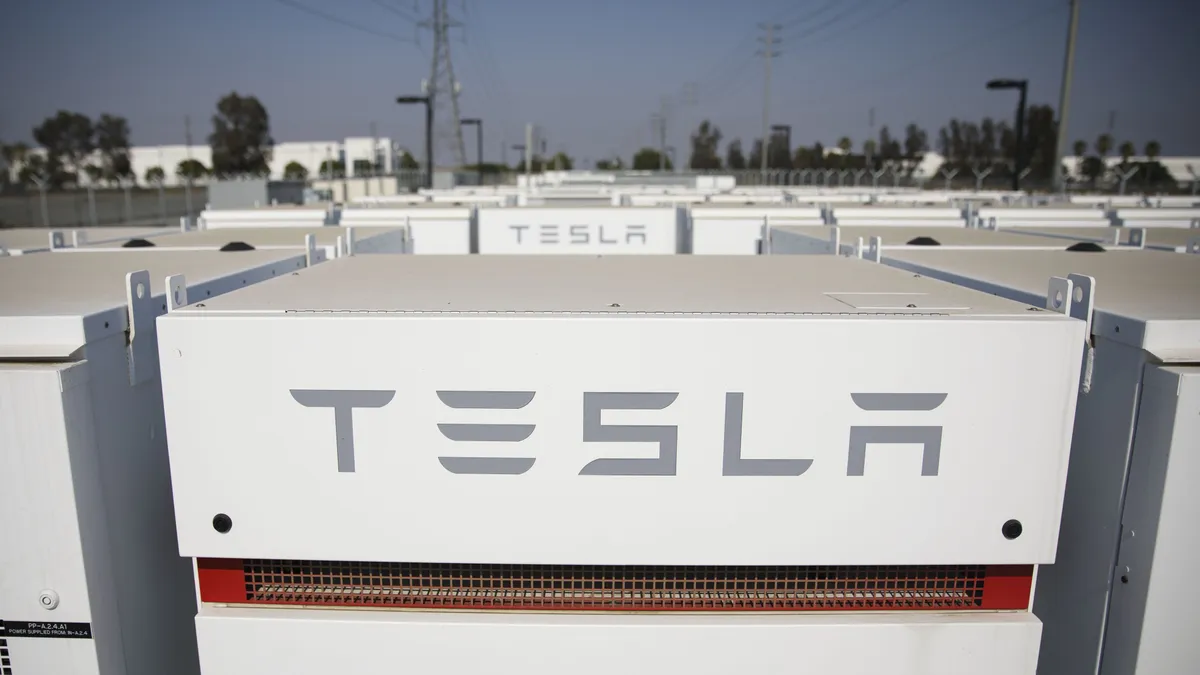Dive Brief:
- A large battery installation Tesla completed in Australia last year has already been having a significant impact on grid operations, according to RenewEconomy. In December, Tesla completed the 100 MW/129 MWh battery facility, the Hornsdale Power Reserve project to stabilize the electric grid in South Australia.
- RenewEconomy reports the Tesla resource stepped in last month when units twice tripped offline at the Loy Yang coal plant. The batteries supplied grid power at "record pace," according to some media outlets.
- The project is located at Neoen’s 315 MW Hornsdale wind farm. Last year, Tesla CEO Elon Musk declared the storage facility would be "built and working" within 100 days of contract signature. It came online last month on schedule.
Dive Insight:
Tesla already attracted attention when it rolled out the Hornsdale storage project in record time, but now the finished storage system is drawing praise for its work in stabilizing the grid.
When the coal facility's Unit 3 went down, the plant's Unit 1 ultimately replaced the power, but not before Tesla's Hornsdale battery injected more than 7 MW onto the grid, according to the Gladstone Observer. While Hornsdale storage project is much smaller than the almost-1,700 MW coal plant, it can rapidly respond to operational issues in order to maintain grid reliability.
RenewEconomy reports Hornsdale acted exactly as it should have, as it is contracted to provide grid services in southern Australia. Details on the contract remain confidential, however.
Tesla's new system size exceeds San Diego Gas & Electric's 120 MWh Escondido storage facility, in California. The Hornsdale plant is currently the largest lithium-ion battery in the world. Before SDG&E's Escondido project came online, Tesla briefly held the distinction for its 80 MWh facility for Southern California Edison. However, two other Australian energy projects could soon eclipse Tesla's achievement.
In Brisbane, renewable energy firm Lyon group earlier this year announced plans for a 100 MW/400 MWh battery storage system at a wind facility. Queensland's SolarQ is planning a lithium-ion storage system of up to 4,000 MWh to be paired with a 350 MW solar facility.














